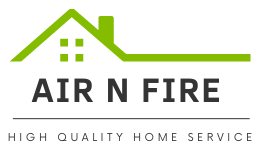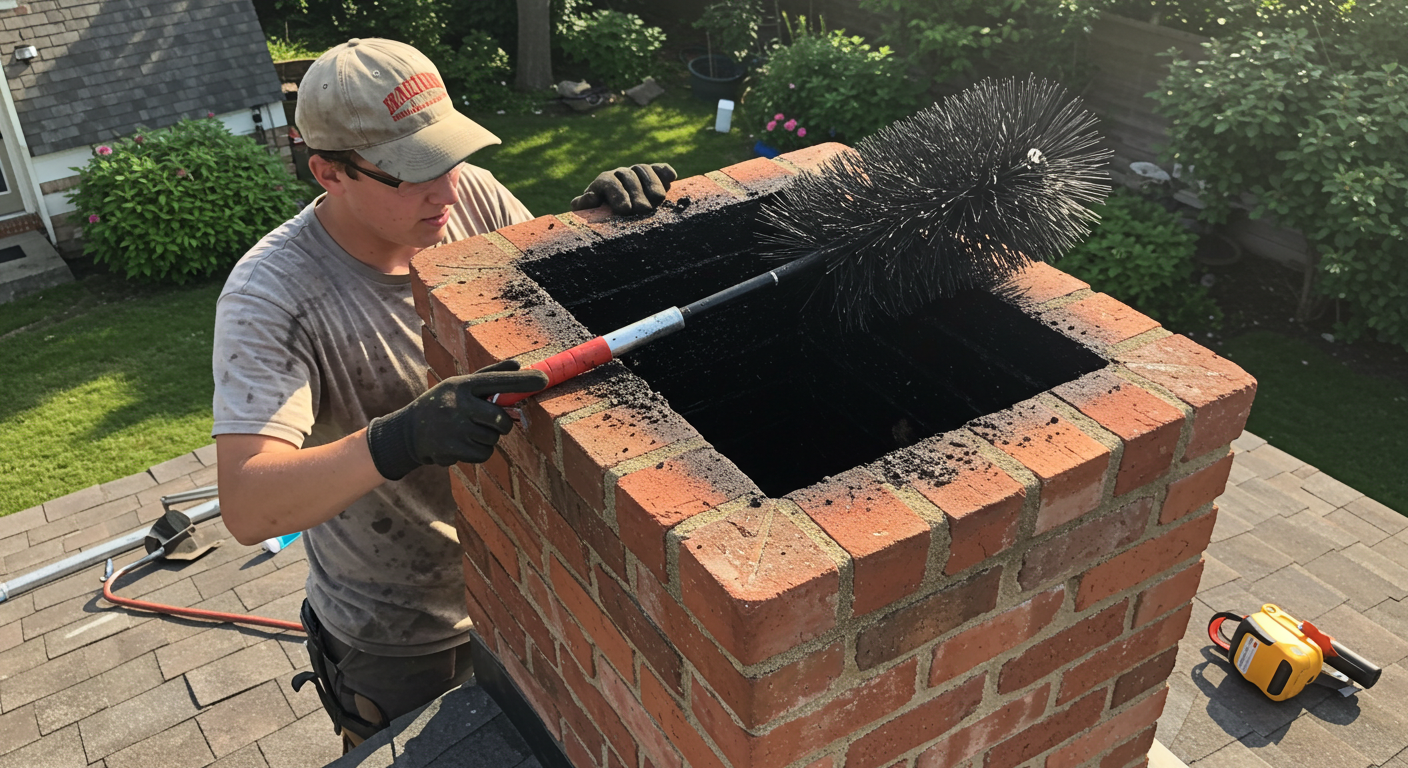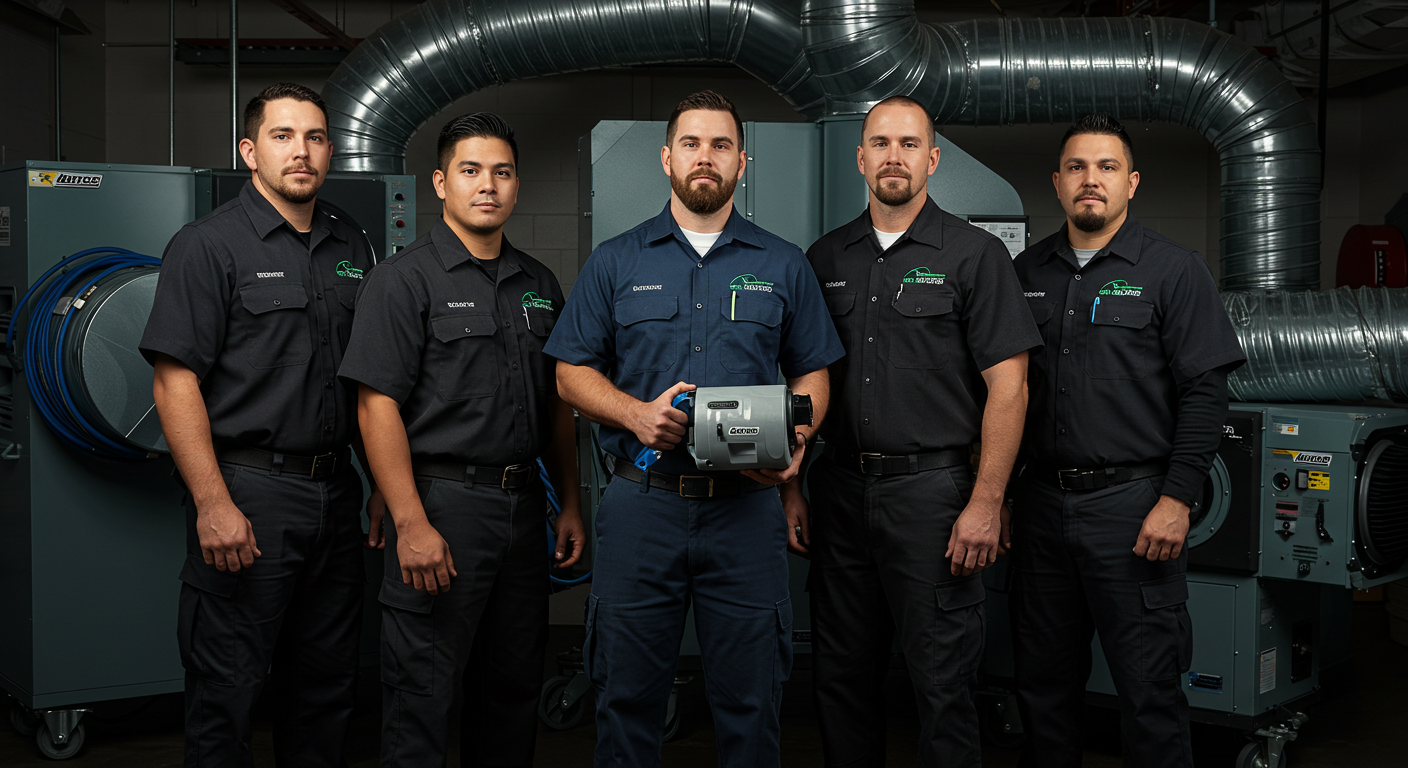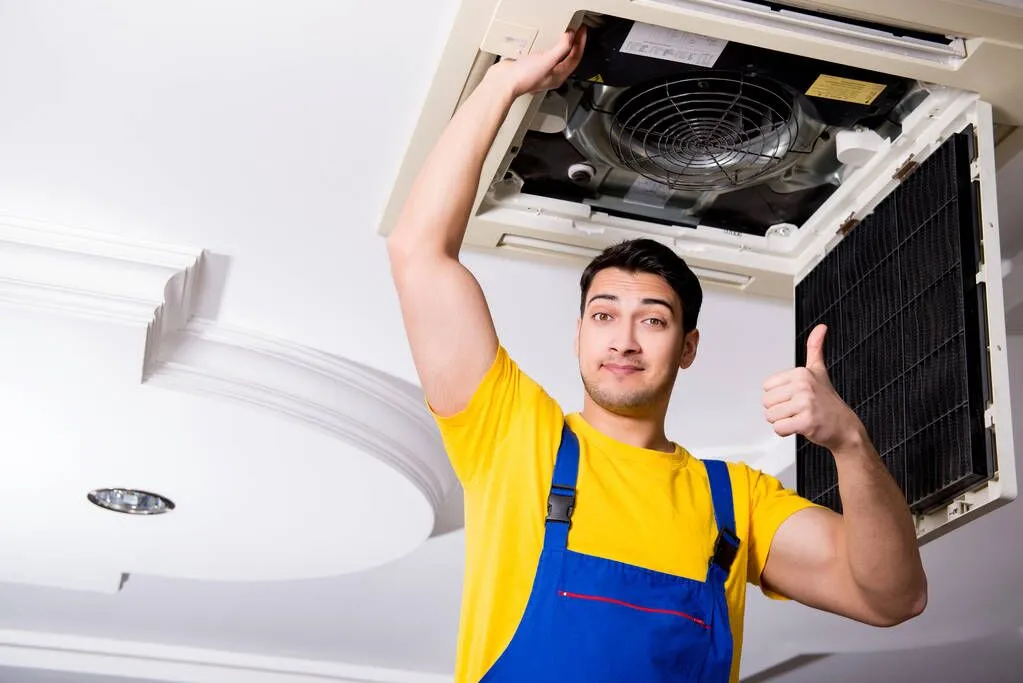A chimney cleaning routine helps you maintain the efficiency and safety of your fireplace. If you are wondering, how do I clean my chimney myself? You are in the right place!
Over time, soot, creosote, and debris accumulate inside the chimney flue, posing fire and ventilation hazards. Learning how to clean your chimney can save money while ensuring your home remains safe and warm. Today, I will guide you through all the required steps, tools, and techniques for a proper DIY chimney cleaning process.
Tools Required For Chimney Cleaning
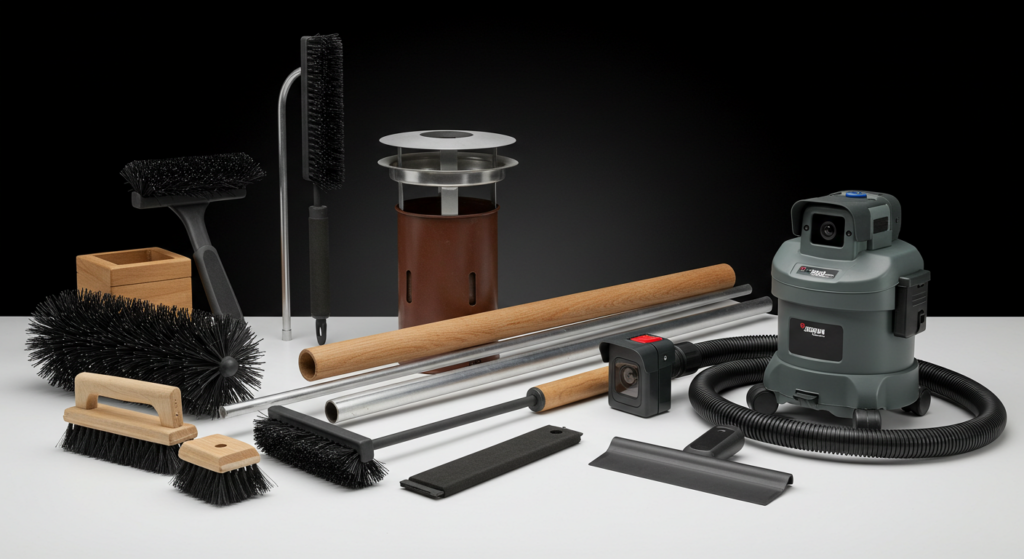
1. Chimney brush with extension rods
2. Dust mask and safety goggles
3. Stiff wire brush
4. Heavy-duty drop cloths or plastic sheeting
5. Flashlight
6. Ladder
7. Protective gloves
8. Shop vacuum
9. Duct tape
10. Rope (for specific cleaning methods)
11. A bucket for debris collection
12. Creosote-removing chimney logs (optional but helpful)
13. Long-sleeved clothing to prevent skin exposure
14. A tarp or additional protective covering for furniture near the fireplace
How To Clean Chimney? Step By Step Guide
Before you begin the clean fireplace chimney chore, ensure you have all the necessary equipment and take safety precautions to avoid accidents. Here is an in-depth guide to how to clean a chimney flue properly.
Step 1: Dress With Safety In Mind

To prepare for your do it yourself chimney cleaning chore, wear a dust mask, gloves, and safety goggles to protect yourself from soot and debris. Wear old clothing or a long-sleeved outfit to minimize creosote having direct skin contact.
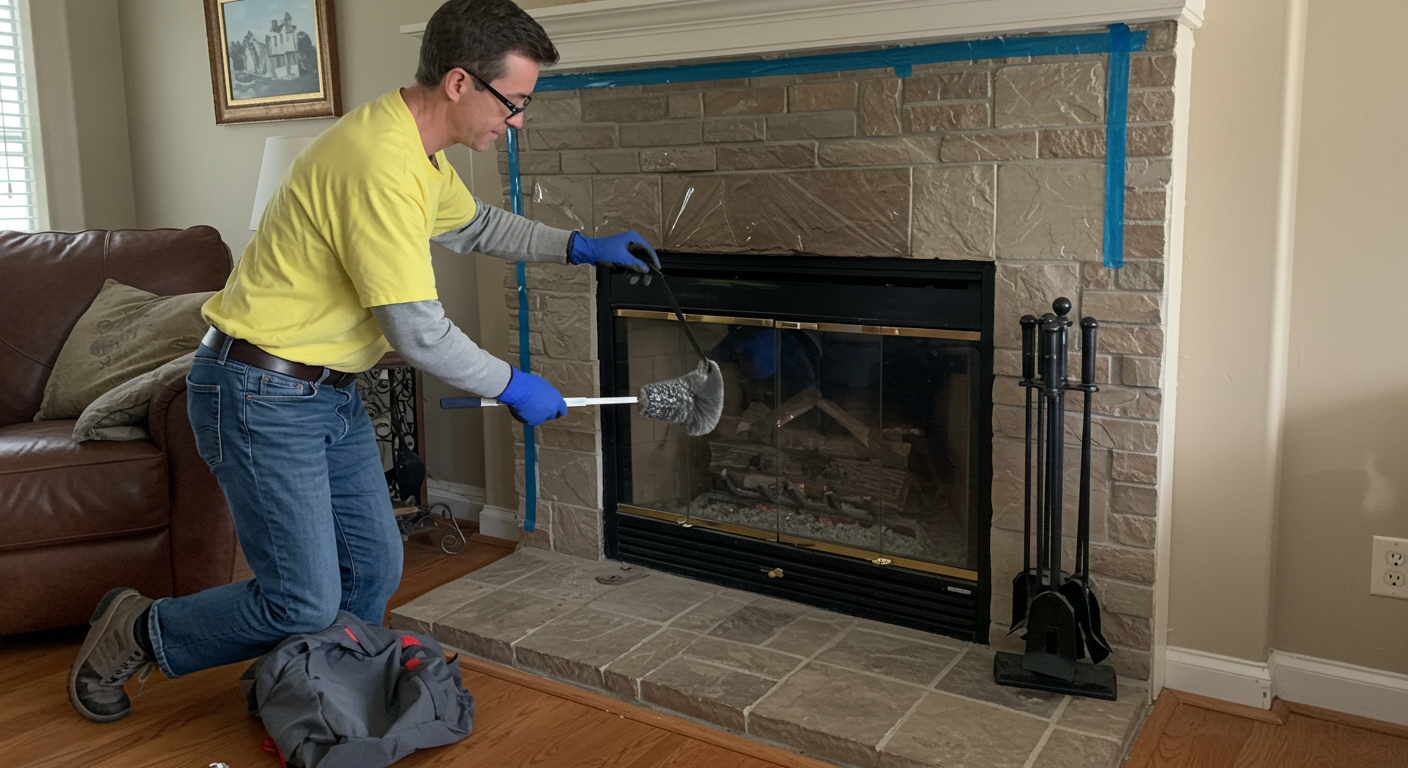
Step 2: Seal Up The Fireplace
Cover the fireplace opening with a plastic sheet or heavy cloth to stop dust from entering your living space. You could use duct tape to seal it airtight so that nothing leaks.
Step 3: Climb Onto The Roof
Ensure your ladder is attached to a sturdy surface. Climb to the top of the roof to reach the chimney. Ensure your footing is stable, and use a safety harness if needed.
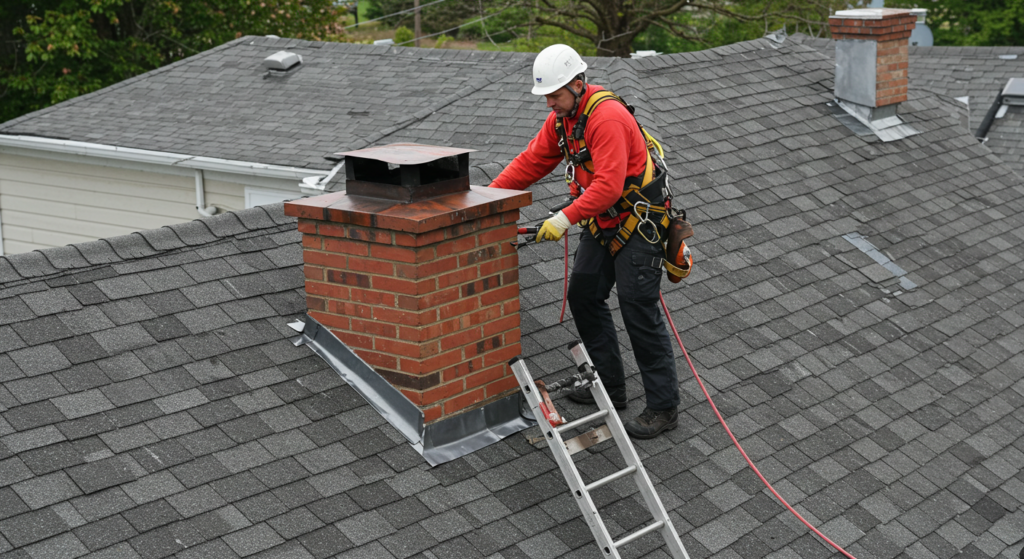
Step 4: Remove Chimney Caps
Unscrew and remove the chimney cap to expose the flue for cleaning chimney flue properly. If there are any obstructions like bird nests or debris, remove them carefully before proceeding.
Step 5: Prepare Chimney Cleaning Brush
Attach the brush to extension rods, ensuring it’s long enough to reach the entire chimney. For stubborn creosote build-up, you can rely on chemical chimney cleaners and mechanical scrubbing.
Step 6: Scrub The Chimney
Insert the brush into the chimney and scrub firmly to dislodge soot and creosote. Move the brush up-and-down to clean the flue walls thoroughly.
Step 7: Scrub As You Remove The Brush
Slowly pull out the brush while scrubbing, ensuring thorough, clean fireplace chimney results. Do this several times until the drains are free of debris.
Step 8: Inspect With A Flashlight
Use a flashlight to check for any remaining debris or blockages inside the chimney. If needed, repeat the scrubbing process.
Step 9: Finish Roof Operations
Once how to clean a chimney flue is complete, reinstall the chimney cap securely to prevent animals or debris from entering.
Step 10: Clean The Downstairs
Carefully remove the plastic sheet within your home and vacuum up any remaining debris. Wipe the fireplace area with a damp cloth to remove fine soot.
Step 11: Properly Dispose Off The Creosote
After cleaning your chimney, collect the soot and creosote in a disposable, sealed bag. Creosote is flammable and should never be left inside or around the house. If you have a designated outdoor disposal area, keep the bag away from the heat source. For those using a fireplace regularly, it is advisable to check with local waste disposal regulations to see if there are specific requirements for handling creosote waste.
Step 12: Remove The Sheet Plastic
Once everything has been cleaned and properly disposed of, carefully remove all protective coverings, including the sheet plastic from the fireplace and any tarps around the work area. Shake them outside to remove excess soot before folding them for storage or disposal.
Types Of Chimney Cleaning Methods
There are several ways to clean your chimney, each offering a different approach based on convenience, safety, and effectiveness. Bce it a do it yourself chimney cleaning technique or professional assistance, understanding these methods helps you choose the right one for your setup.
Below are the most effective techniques for cleaning your chimney efficiently.
1. Top-Down Method
This is one of the most common how to clean chimney techniques; here, a chimney brush is attached to flexible rods, inserted from the top, and pushed downward. The brush scrubs the walls, dislodging soot and creosote, which fall into the fireplace for easy cleanup.
2. Bottom-Up Method
For those who prefer do it yourself chimney sweep from inside the house, this method works by inserting the chimney brush from the bottom of the flue and pushing it upward; while effective, this method that requires locking off pathways to prevent messes in the house.
3. Weight Method
This technique involves attaching a heavy weight to a chimney brush and lowering it from the top. The weight assists in applying downward pressure, making it an effective diy chimney sweeping method for chimneys with heavy soot.
4. Dual Line Method
A two-person approach, where one person holds the brush from the top while the other pulls from the bottom, ensures a thorough how to sweep a chimney yourself.
Benefits Of Cleaning Chimneys
Regular cleaning of chimneys is an essential part of home maintenance, with numerous advantages. A poorly maintained chimney can have dangerous and expensive repercussions, but the solution is simple: confirming regular maintenance means a safe, efficient, and longer-lasting fireplace experience.
A regular chimney cleaning routine or scheduling a professional chimney inspection keeps your home secure, warm, and comfortable all year round.
Here is what you need to know and why cleaning your chimney should be prioritized:
1. Fire Deterrent
Creosote buildup is one of the leading causes of chimney fires. Knowing how to clean a chimney regularly can help reduce this risk and protect your home and family from its associated dangers.
2. Better Airflow
A clogged chimney restricts airflow, leading to inefficient smoke expulsion. A well-maintained chimney ensures proper ventilation, allowing smoke, soot, and harmful gases to escape safely.
3. Better Heating Efficiency
When your fireplace chimney is clean, the fire burns hotter and more efficiently, requiring less fuel to keep your home warm.
4. Cost Savings
Routine chimney cleaning prevents long-term damage that could lead to expensive repairs or even a complete chimney rebuild.
5. Extend Chimney Lifespan
Over time, soot and moisture cause gradual deterioration of chimneys. Regular cleaning chimney flue maintains the mechanical integrity of your chimney and minimizes wear and tear.
6. Health Benefits
If a chimney is left neglected, creosote, mold, and soot can build up and cause severe respiratory issues. Cleaning your chimney reduces exposure to harmful gases such as carbon monoxide and allergens.
7. Tames Unpleasant Odors
A grimy chimney smells musty, smoky, or burnt, and these unwelcome odors can permeate your home. How do you clean a chimney? Routine maintenance removes these unwanted odors.
8. Prevents Animal Nesting
Small animals like birds and squirrels often find chimneys an ideal nesting place. A clean fireplace chimney deters them from making it their home, preventing blockages and the risk of burning down the house.
9. Enhances Home Safety
A neglected chimney can cause dangerous back-drafting, allowing toxic gases to enter your home. Knowing how to clean a chimney flue properly ensures better air quality and home safety.
10. Increases Property Value
If you ever plan to sell your home, a clean chimney can enhance its value and attract potential buyers, making it a worthy investment.
Can I Clean My Chimney Myself?
Yes! If you have ever wondered how I can clean my chimney or how you can clean your chimney, the answer is simple: Follow this guide. Clean your chimney safely using the right tools and precautions; however, hiring a professional might be a better option if creosote buildup is too thick or there are structural issues.
How Often Should I Clean My Chimney?
A chimney should be cleaned at least once a year. However, cleaning the chimney flue every 4-6 months is recommended if you use your fireplace frequently.
Can I Use My Fireplace Immediately After Cleaning The Chimney?
No. Allow at least 24 hours before using the fireplace to ensure all residual debris has settled and then removed.
Are There Any Safety Precautions I Should Take When Cleaning My Chimney?
Yes, here are my recommendations:
1. Always wear protective gear.
2. Use a stable ladder and secure footing when working on the roof.
3. Ensure proper ventilation.
4. Never attempt to clean the chimney during bad weather conditions.
How To Keep Your Chimney Cleaner Longer?
You can follow this guide:
1. Burn only seasoned wood to reduce creosote buildup.
2. Install a chimney cap to prevent debris accumulation.
3. Schedule regular how to clean your fireplace chimney maintenance.
4. Use creosote logs occasionally to break down deposits.
Schedule Your Chimney Cleaning With Air N Fire
If you are unsure how to clean your chimney, professional help is available! Air N Fire offers expert clean fireplace chimney services in plano. Regular cleaning improves performance and protects your home from fire hazards. Book your appointment and enjoy a well-maintained chimney all year round!
Contact them today to schedule an inspection and maintenance session for a safer, cleaner home!
FAQs
1. How Can you clean your chimney?
Yes, you can clean your chimney yourself using the proper tools and safety precautions. This guide will help you with step-by-step instructions on how to clean your chimney effectively.
2. How often should You clean my chimney in Austin?
It’s recommended to clean your chimneyin austin at least once a year. However, if you use your fireplace frequently, cleaning every 4-6 months is advised to prevent creosote buildup and ensure optimal performance.
3. What tools are needed for chimney cleaning?
Essential tools include a chimney brush with extension rods, dust mask, gloves, safety goggles, heavy-duty drop cloths, flashlight, shop vacuum, and a ladder for roof access.
4. Can I use my fireplace immediately after cleaning the chimney
No, you should wait at least 24 hours before using your fireplace to ensure any remaining debris has settled and is completely cleared out for safe use.
5. What are the benefits of regular chimney cleaning?
Regular chimney cleaning improves safety, reduces fire risks, ensures better airflow, increases heating efficiency, prevents unpleasant odors, and extends the lifespan of your chimney.
6. What is the difference between chimney cleaning and chimney sweeping?
Chimney cleaning and chimney sweeping are terms often used interchangeably, but they can have slightly different meanings. Chimney sweeping typically refers to the act of removing soot and creosote from the chimney flue using a brush or other mechanical tools. Chimney cleaning, on the other hand, is a more comprehensive process that may also include clearing debris, inspecting for damage, and ensuring the entire chimney system is free from blockages and ready for safe use.
